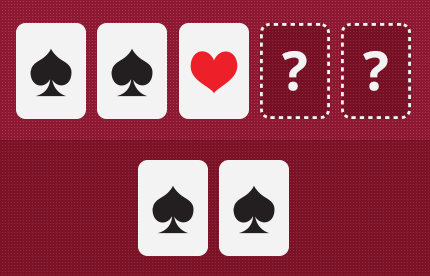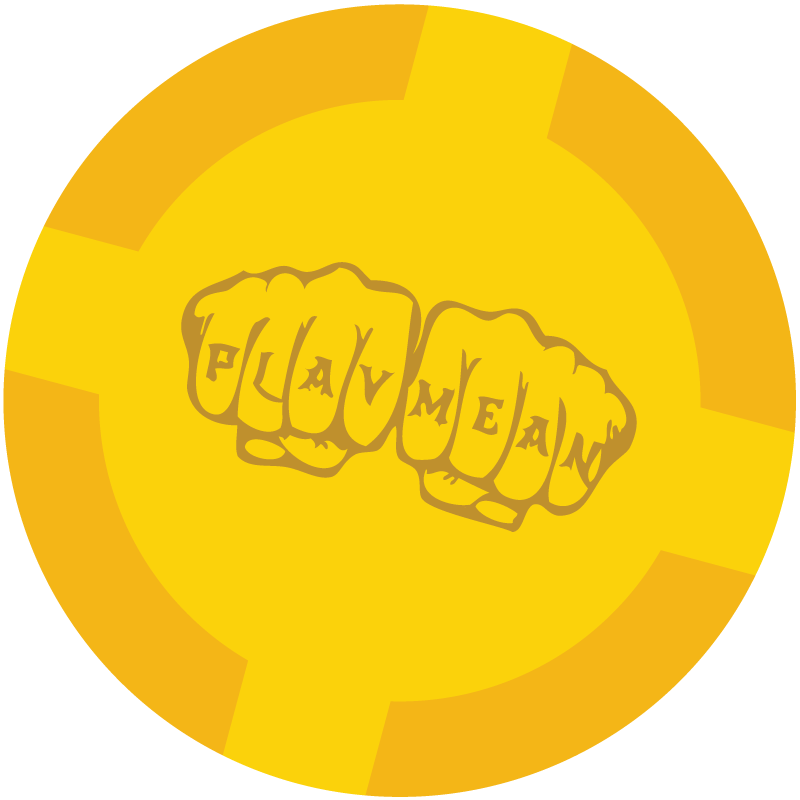Although c-betting is a basic poker concept, it has evolved significantly over the time and there are numerous advanced concepts that you need to be aware of in today's games. Evolution of c-betting.
C-betting is considered

a basic concept in NLHE, but it is nonetheless constantly evolving. It's also common to hear a large range of different opinions on whether it is correct to cbet in certain spots. Some rely heavily on board texture while others base their decision more on their hole-cards, or their
opponents stats. So which is the correct approach in today's games?
How the games have changed
If you consulted a strategy guide on cbetting from 5 years ago it would be common to see the following advice:
Cbet very frequently on dry boards but be more cautious on drawy boards.
The result was that most regulars would nearly always fire a continuation bet on any type of A72r, or K72r texture. The idea was that the drier the board texture, the less often our opponents will have connected with it and the more they will be folding to continuation bets.
It shouldn't be too hard to see how this can be exploited. If we were playing against an opponent who fired a continuation bet with 100% frequency on a K72r board, how would we adjust? We'd obviously stop folding just because we hadn't connected hard with the board. We'd take a chunk of our air hands with good potential and consider floating them.
So does this mean that cbetting any monotone high-card texture with 100% frequency will not be profitable anymore? In many situations yes, but naturally it depends. The reason why the strategy was initially profitable is that our opponents would play a fit-or-fold strategy. On a dry texture they would fold more frequently as a result.
But better players understand that we have not hit dry textures either, and won't necessarily be more inclined to fold just because they haven't hit the board. In fact, if they perceive that we will be c-betting a certain texture with a high frequency, they may even be less inclined to fold.
Caution
So vs some opponents the old strategies may still apply. But attempting to use them by default at any limit above 25nl could be considered ambitious. It's not purely a case of being exploited on the flop. If we shift all of our air hands to one part of our range (I.e cbetting), our opponent will be able to perceive that we don't have these hands when we take another line. For example if we go for a delayed cbet it will clearly be for thin value or a slowplay – since we are perceived to put all of our air hands into our flop cbetting range.
It's necessary to take a slightly more balanced approach by default. We are not talking about game theory perfect balance here by any means, we should still focus on playing exploitably. But certain things we could get away with 5-years ago are no longer as viable as they once used to be. We are going to need to take a more dynamic approach to cbetting if we want to survive in today's games.
The Basic Principles
Rather than auto-firing on any particular flop texture – consider these 3 principles.
Stats – This is one thing that hasn't changed from 5 years ago. How much is opponent
folding to cbets? It's also extremely important to understand that opponent's stats on later streets are entirely relevant in our flop decision. So if we purely check our opponents fold-to-flop cbet without consulting his fold-to-turn-cbet stat, there s no guarantee that we are making the correct decision on the flop. See the 2 part series
Postflop Planning, for more information on this.
Backdoor Potential – For many years players have made the mistake of thinking that 100bb poker is about pot-
equity. It's not. It's about playability and potential on later streets in the vast majority of cases. There are certain high equity hands that make very poor cbets. (For example some type of Axo hand with little backdoor potential). And some of the lower equity hands actually make excellent cbets. (Imagine some type of mid-high suited-connector with all possible backdoor flushes and straights available). Before we cbet any hand we should consider the playability of the hand on the turn and river. If we have a value-hand we should also consider how many streets of value we think it is worth.
Vulnerability – This is possibly the most important and most overlooked concept regarding cbetting. The vulnerability of our hand. We should tend towards cbetting vulnerable hands, whereas with non-vulnerable hands we have the luxury of being able to check back.
100bb poker is not about pot-equity. It's about playability and potential on later streets in the vast majority of cases.
It's important to understand what vulnerability is and what vulnerability is not. For example, look at the following hands.
Board Texture K72
A2
K3
Which of these would you say are vulnerable? Some might say both, because K3 could easily be beaten by a higher Kx. However vulnerability has absolutely nothing to do with how likely our hand is to be beaten. Vulnerability can be defined as -
If we assume our hand is good; How likely is it to be sucked out on?
So now we should be able to see that the
K3 is actually very non-vulnerable. The only card we are scared of is an Ace. There are no possible flush or straight draws on the board. However if we look at the
A2 on this texture we should be able to see that it is extremely vulnerable.
It's true that the board is very dry, but most of the possible turn cards will be overcards to our pair. Some might mistakenly check back this type of hand (in certain situations) claiming that we have “
showdown value”. A common mistake is to over-value weak showdown hands. Asking ourselves the following question should help us to more objectively evaluate our showdown holdings -
If I check back IP how would I feel about calling a bet on the next street?
If the answer is

that we'd probably end up folding then we are generally in better shape if we take an aggressive line and turn our hand into a semi-bluff. At least we get some
fold equity this way, and our aggression may buy as an additional street to improve. The question above revolves around being in position but can serve a similar function when we miss our cbet OOP.
If I check here how would I feel about check-calling? We will often find that the more vunerable of our showdown value hands make better semi-bluffs than check calls. By taking the betting lead we also reduce the frequency with which our opponent gets to see a card on the next street.
Cbetting Examples
We will now consider a range of examples where we illustrate in more detail the basic concepts discussed above.
In each example, we have open raised on the BTN and get a call from the blinds. Our opponent checks to us and we are faced with a cbet decision. The first texture we will consider is the one discussed above i.e.
Board Texture K72
89 – It should be evident that we have a decent amount of backdoor potential with this type of holding despite it being a low equity hand in terms of raw-equity. In many cases it makes sense to list our barrel cards before cbetting. We know that we improve on any spade, any T and any 6. We will generally be barreling these cards against most opponents. Any 5 or J will give us a gutshot which can be considered and will often be situational.
It's important to keep in mind any exceptions based on stats however. It's very common for players to make mistakes by rigidly sticking to a default strategy where they cbet high-potential hands and always barrel on improved equity. Here are 2 scenarios where we should deviate.
It's very common for players to make mistakes by rigidly sticking to a default strategy where they cbet high-potential hands and always barrel on improved equity
a) Opponent is a
calling station – Seems pretty obvious, but you might be surprised at the number of players who end up cbetting and barreling anyway. The main reason we cbet a hand like
89 and potentially barrel the turn is our fold-equity. If we don't have any fold-equity when we bet we are simply building a pot in a situation where we are unlikely to have the best hand because we have 9-high.
b) Opponent is extremely tight on the flop – This is obviously great for firing flop cbets. However – the fact that opponent is so tight on the flop means that by the time he gets to the turn he is frequently going to have an extremely strong range. What does this do to our fold-equity? It drastically reduces it in most cases. So we have a valid reason to not barrel despite the fact that we pick up equity.
77 - This type of hand

will often divide opinions, and for good reason. Both options here are pretty legitimate. We can cbet, or we can check. Cbetting should usually be considered standard however. We mentioned that we should always consider how many streets of value our hand is worth. A set is going to be worth three streets here – by checking the flop we are potentially
missing value. Sometimes we will recover that value (and even more) by taking a deceptive line, but not always.
The situation where checking is clearly better is if
- villain has an extremely high fold-to-flop cbet
- he will play aggressively as a bluff when he senses weakness after we check
If neither of these are true then checking can be a signicant mistake despite the dry texture.
K3 – We considered this hand earlier and decided it was distinctly non-vulnerable. Both checking and betting should be considered as options in this case. How many streets of value is our hand worth here? In most cases a weak top pair will be worth 2 streets of value. If we attempt to fire 3 streets we will likely get a bunch of folds, or calls from better hands. Naturally it depends on our opponents however. We may be able to extract 3 streets of value from a calling station but may only be able to extract one street of value from a nit.
Since our hand is only worth 2 streets of value anyway, we don't really have too much to risk by checking back a non-vulnerable hand. We may increase our expectation by doing so. Firstly we represent weakness by checking back instead of cbetting, and secondly we give our opponent an opportunity to lead the turn with certain bluffs that he might be check-folding if we were to cbet the flop.
A2 – We also considered this hand earlier and decided that this was an extremely vulnerable holding. Cbetting is generally going to be best. We can treat this hand as a pure semi-bluff and barrel on cards that improve us. (Either flush cards or cards that give us two-pair/trips).
Sometimes players have a hard time understanding this. They might reason along the following lines
Do we really fold out any better hands? Do we really get calls from worse?
It's generally important

to discard this type of thinking as being a product of strategy content from a much earlier time where the game was less understood than it is now. It's actually the case that we might fold out some better hands (33 perhaps) and that we might get called by some worse hands (high potential floats). This is not the point however, even though it adds significantly to our expectation.
The important thing to understand is that we actually benefit from folding out a worse hand, which is something that more traditional theorists have a tendency to ignore. Imagine for a minute that our opponent has something trashy like T8o on the K72r texture. Is it better for us to check just because our opponent has a worse hand? If we could see his hole-cards perhaps it might be, because we'd be brutally effective at picking off
huge bluffs on the later streets.
In reality we don't see his cards though. So let's imagine that he has T8o but we don't know that he holds it. Would we still rather he folded it or would we still rather that we check back and give him an opportunity to bluff? In reality it will be the first option, we actually want our opponent to fold his worse hand here, and we benefit significantly when he does. This will be for two main reasons.
The important thing to understand is that we actually benefit from folding out a worse hand, which is something that more traditional theorists have a tendency to ignore.
- He still has significant equity. By checking we are potentially giving him up to roughly 25% free equity. It's true that he is still not a favourite to win, but that 25% free equity is really going to add up in the long run.
- We will be forced to fold if he bluffs. This is perhaps the more important factor. If our opponent leads on the turn we will often be forced to fold in the majority of cases unless we spike one of our outs. This effect is less severe when we also have the backdoor flush. Without it we'd likely be folding on any turn card which wasn't an Ace or a Two. Remember we mentioned earlier that we should always ask how comfortable we would be defending on the next street if we decide to check back for “pot-control”. We are actually giving our opponent the opportunity to win the pot with a huge frequency if he is suitably aggressive on the turn and river. Betting the flop is also a good idea because it protects us from getting bluffed on later streets.
While these are the main two reasons why betting is much superior there are other reasons also. We have a hand with good nut potential by the river and we build a pot by cbetting which will help insure we get a big payout if we hit something decent.
In part 2 we will continue by making application of the discussed principles to various examples.
 a basic concept in NLHE, but it is nonetheless constantly evolving. It's also common to hear a large range of different opinions on whether it is correct to cbet in certain spots. Some rely heavily on board texture while others base their decision more on their hole-cards, or their opponents stats. So which is the correct approach in today's games?
a basic concept in NLHE, but it is nonetheless constantly evolving. It's also common to hear a large range of different opinions on whether it is correct to cbet in certain spots. Some rely heavily on board texture while others base their decision more on their hole-cards, or their opponents stats. So which is the correct approach in today's games? that we'd probably end up folding then we are generally in better shape if we take an aggressive line and turn our hand into a semi-bluff. At least we get some fold equity this way, and our aggression may buy as an additional street to improve. The question above revolves around being in position but can serve a similar function when we miss our cbet OOP.
that we'd probably end up folding then we are generally in better shape if we take an aggressive line and turn our hand into a semi-bluff. At least we get some fold equity this way, and our aggression may buy as an additional street to improve. The question above revolves around being in position but can serve a similar function when we miss our cbet OOP.  will often divide opinions, and for good reason. Both options here are pretty legitimate. We can cbet, or we can check. Cbetting should usually be considered standard however. We mentioned that we should always consider how many streets of value our hand is worth. A set is going to be worth three streets here – by checking the flop we are potentially missing value. Sometimes we will recover that value (and even more) by taking a deceptive line, but not always.
will often divide opinions, and for good reason. Both options here are pretty legitimate. We can cbet, or we can check. Cbetting should usually be considered standard however. We mentioned that we should always consider how many streets of value our hand is worth. A set is going to be worth three streets here – by checking the flop we are potentially missing value. Sometimes we will recover that value (and even more) by taking a deceptive line, but not always. to discard this type of thinking as being a product of strategy content from a much earlier time where the game was less understood than it is now. It's actually the case that we might fold out some better hands (33 perhaps) and that we might get called by some worse hands (high potential floats). This is not the point however, even though it adds significantly to our expectation.
to discard this type of thinking as being a product of strategy content from a much earlier time where the game was less understood than it is now. It's actually the case that we might fold out some better hands (33 perhaps) and that we might get called by some worse hands (high potential floats). This is not the point however, even though it adds significantly to our expectation.

